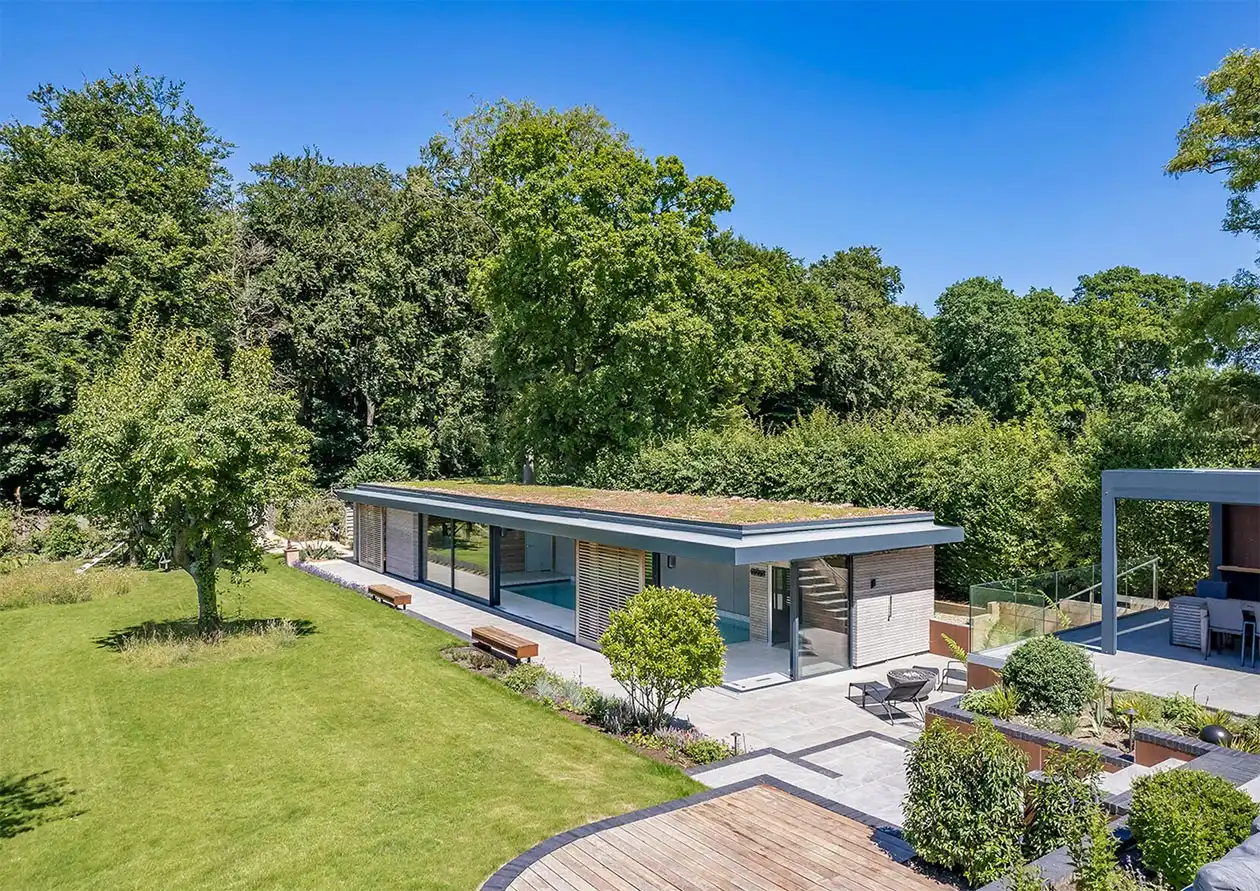
When it comes to building an indoor pool, there's a whole lot more to consider than just what meets the eye. In our 40 years of experience in the pool industry, we’ve seen it all. From the soil beneath your feet to the glazing overhead, every aspect plays a role in shaping both the cost and outcome of your project. Join us as we delve into the nitty-gritty details and explore how factors like ground levels, land designation and pool house finishes can impact your indoor pool build.
Location, Location, Location
Did you know that there can be many hidden costs lurking beneath the surface when it comes to building your indoor pool? It's not just about what's visible above ground; factors like soil type and water table levels can significantly impact your project's overall cost. Depending on your location, especially in the South or Southeast, you might encounter different soil compositions, requiring extra depth or reinforcement for your pool house foundations to withstand the local ground conditions. Additionally, any necessary demolition or enabling work to facilitate the build of your new indoor pool should be factored into your budget as well as considerations such as dewatering to manage high water tables in the ground - all of these items can cost more to ensure a fully functioning pool.


Changes in ground levels, whether due to garden terrain or building on slopes, may also pose challenges which require additional work due to the relocation of the soil and retaining structures. The presence of mature trees in your garden can also potentially influence costs, especially if they're protected by tree preservation orders. It can be hard to know what effect their root systems might have on the foundations of your indoor pool and this can lead to further requirements.
Land Designation
In some instances, there are elements of indoor pool cost that are unfortunately outside of your control. Living in certain areas like the Green Belt, AONB, or conservation areas, or having a listed home can come with extra costs and complications. Land designation might limit where you can build your pool, how big it can be, and how close it can be to your property. Plus, local planning policies might require specific external finishes that you hadn't budgeted for or initially thought of. Depending on your property's designation, you might need extra reports before you can progress to planning. Think archaeological digs, ecological surveys, and arboriculture reports – all done by third parties and all adding time and money to your project.


Designers, Make It work
We’ve previously discussed the cost factors when designing a pool house interior. However, there are additional elements to consider when thinking of external design and how you want your pool house to look. More recently, we have spent time studying the effects of solar and how we can use it to our advantage or how it can be detrimental to your indoor pool design. Glazing, especially roof glazing, can significantly impact the design and cost of your pool house. More glazing requires higher levels of atmosphere control, necessitating more advanced equipment and adding to the overall cost. Different roof configurations and finishes also play a part. There are some cost-effective solutions available and it may depend on what planning policies apply to your area. Complex roof finishes involving multiple roof coverings, such as flat roof systems with parapet details or pent roofs, can add character but will ultimately be more costly owing to the complexity of the design.



